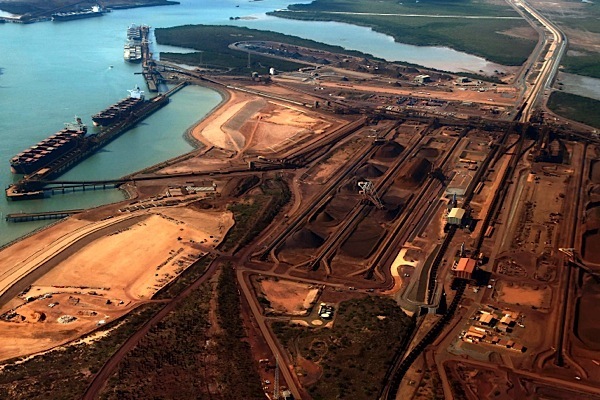Iron ore prices: the worst is yet to come
While analysts say waning demand for steel in China and surging supply is set to push the iron ore price lower, Australia’s biggest iron ore miners are looking at the future with rose tinted glasses.
Rio Tinto’s CEO, Andrew Harding, told The Australian Financial Review on Thursday that volatility will recede and the iron ore price “is moving around its long-term average after coming off an unprecedented high that was never sustainable”.
He maintains that the “long-term picture for iron ore remains sound”, and the commodity will “continue to be a wealth generation machine for Australia”
BHP Billiton’s head also forecasts declining volatility.
But right now, iron ore prices are choppy. Iron ore delivered to China’s Qingdao port nosed dived and lost 10% falling to $44.59 a tonne Wednesday, according to the Metal Bulletin. That’s the lowest price since spot trading of iron ore began in May 2009.
Adding to factors that could upset markets are miners at the brink. UBS estimates of break even prices – the point at which miners neither make or lose money – show little room to move. The investment bank puts the breakeven of BC Iron at $52 a tonne, Mount Gibson at around $49, and Fortescue Metals Group at $44 a tonne. Gina Rinehart’s Roy Hill, expected to ship its first ore this September, has an assumed break-even price of $41 a tonne.
And while iron ore miners say full steam ahead, an industry group forecasts a coming production drop. The Metallurgical Industry Planning Association says output will fall this year for the first time in two decades mainly in response to weak demand.
{{ commodity.name }}
{{ post.title }}
{{ post.date }}





3 Comments
Former Utah Man
Even if breakeven is only $41 at Roy Hill, one wonders how the project will make interest payments, let alone principal on its $7.2 billion of project finance.
Scooter
You need to include some detail on those breakeven prices – FOB? CFR? Mine gate? Otherwise they are irrelevant numbers. Fortescue B/E seems far too low, unless it’s C1. Which is not really a relevant number.
jgv1 .
Low prices also kill off supply. The high cost producers have to close down. The winners are the low cost, efficient, and low debt producers.
For oil production, KSA still makes money at $50-barrel but Canadian oil sands and Brazilian Offshore properties shutdown or lose incredible amounts of money.